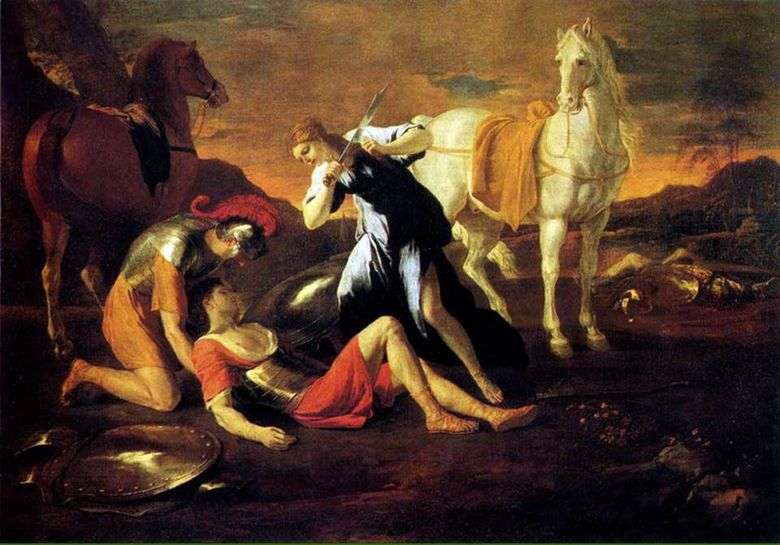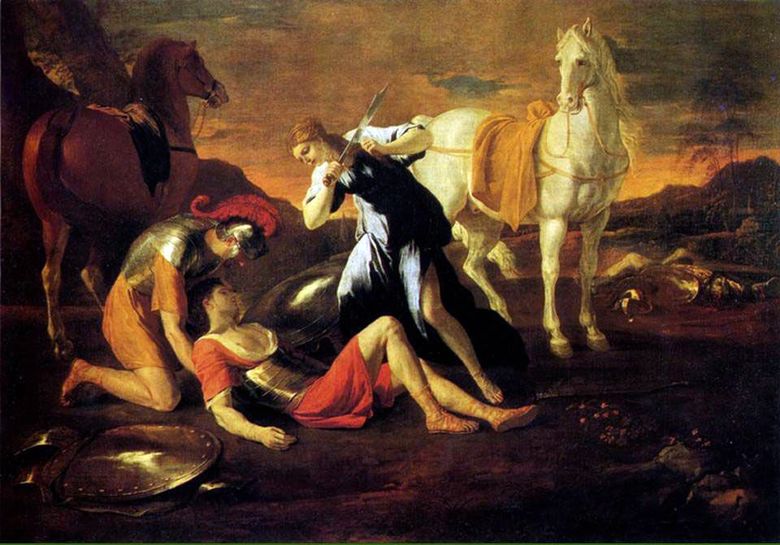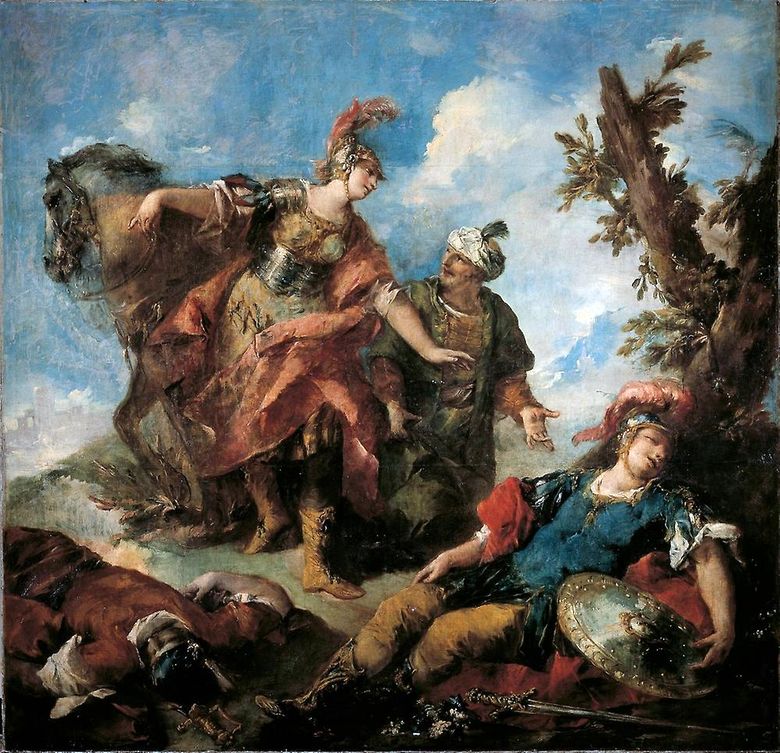
In the works of Nicolas Poussin the principles of French classicism of the seventeenth century were most fully embodied. The basis of the artist’s art was the search for a moral and aesthetic ideal. In everything, starting from the plot and ending with the execution of the picture, he strove to achieve harmony connecting both the wisdom of thought and heroic characters, and the impeccable clarity of the pictorial language.
Poussin searched for themes for his works mainly in the Bible or ancient history. But often, especially in the early period of creativity, he turned to literary plots, most often to poetry. He was very attracted to the knightly poem Torkvato Tasso “The Liberated Jerusalem”, full of magical adventures, unexpected and tangled collisions. A number of paintings by the artist are inspired by Tasso’s poems, and he addressed one of the episodes of the poem twice: in the Hermitage and in the art gallery of Birmingham his paintings are kept on the subject “Tancred and Herminia”. The Hermitage masterpiece belongs to those canvases in which the lyrical side of Poussin’s talent is most clearly revealed: its strict rationalism recedes before sincere drama, deep psychologism, passionate intensity of experience.
The leader of the Amazons, Erminia, in love with the knight Tancred, finds him wounded after a duel with the giant Argante. The squire Vafrin lifts Tancred’s motionless body from the ground, and Herminia, in an impetuous outburst of love and compassion, cuts off his hair with a sword in order to bandage the knight’s wounds. Almost everything on the canvas is calmly – Tancred lies powerless on the ground, Wafrin stiffens over him, the horses are motionless, Argant’s body is stretched away in the distance, the landscape is deserted and empty. But into this frozen silence the pathetic movement of Erminia bursts in, and everything around her lights up with the reflected light of her uncontrollable spiritual takeoff.
Stillness becomes tense, strong and deep colorful spots collide with each other in sharp contrasts, glimpses of an orange sunset in the sky become menacing and disturbing. Erminia’s excitement is transmitted to every detail of the picture, every line and light reflection.
Even for the tragic scene, Poussin found strict and simple artistic forms. It is this stately laconicism that makes Tancred and Erminia a masterpiece of rare emotional power.
The painting was acquired for the Hermitage in 1766 from the collection of the artist Aveda in Paris.
 Tancred y Herminia – Nicolas Poussin
Tancred y Herminia – Nicolas Poussin Tancred et Herminia – Nicolas Poussin
Tancred et Herminia – Nicolas Poussin Rinaldo and Armida by Nicolas Poussin
Rinaldo and Armida by Nicolas Poussin Herminia et Vafrin retrouvent Tancred blessé – Giovanni Antonio Guardi
Herminia et Vafrin retrouvent Tancred blessé – Giovanni Antonio Guardi Apollo and the Muses (Parnassus) by Nicolas Poussin
Apollo and the Muses (Parnassus) by Nicolas Poussin Repentance by Nicolas Poussin
Repentance by Nicolas Poussin Death of Germanicus by Nicolas Poussin
Death of Germanicus by Nicolas Poussin Apollo and Daphne by Nicolas Poussin
Apollo and Daphne by Nicolas Poussin